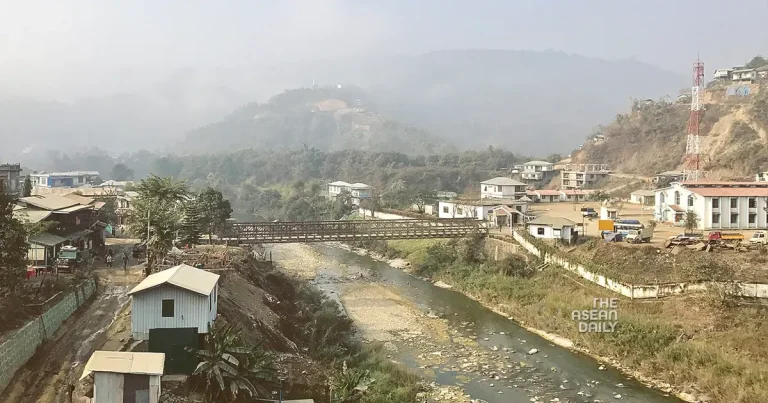22-1-2024 (YANGON) Union Home Minister Amit Shah declared on Saturday that the Indian government has made the decision to construct a fence along the entire length of the India-Myanmar border in order to prevent the unrestricted movement of people. The border, spanning 1,643 kilometers and passing through Manipur, Mizoram, Assam, Nagaland, and Arunachal Pradesh, is largely unfenced at present.
Speaking in Guwahati, Shah stated, “Our border with Myanmar is an open border. The Narendra Modi government has decided to ensure the security of the India-Myanmar border by fencing the entire length, similar to the Bangladesh border. The government is reviewing the Free Movement Regime (FMR) agreement with Myanmar and intends to put an end to the ease of cross-border movement.”
The FMR agreement, implemented in 2018, allows tribes residing along the border on both sides to travel up to 16 kilometers into the neighboring country without a visa. This arrangement was established as part of the Act East policy of the Modi government, aimed at strengthening diplomatic ties between India and Myanmar. The implementation of the FMR was initially scheduled for 2017 but was postponed due to the Rohingya refugee crisis that emerged in August of that year.
The rationale behind the FMR was to facilitate people-to-people contact and boost local trade and business. The border region has a long history of cross-border commerce through customs and border haats, which are crucial for sustaining local livelihoods in the low-income economy. Moreover, Indian towns are more accessible for business, education, and healthcare for people in Myanmar compared to their own country.
However, the FMR has faced criticism due to unintended consequences such as aiding illegal immigration, drug trafficking, and the proliferation of firearms. The unfenced and difficult-to-monitor border, which runs through forested and undulating terrain, has made it challenging to control these activities. Only a small portion of the Manipur border, less than 6 kilometers, is currently fenced.
Since the military coup in Myanmar in February 2021, there has been a surge in persecution against the Kuki-Chin peoples, leading to a significant influx of refugees into India, particularly Manipur and Mizoram. Mizoram has established camps to accommodate over 40,000 refugees, despite objections from the Union Ministry of Home Affairs.
In recent months, Manipur has also witnessed an influx of illegal migrants, with the state government’s committee identifying 2,187 such individuals in 2023. Reports indicate that 5,500 illegal immigrants were apprehended in Moreh in September 2022, with 4,300 of them being pushed back. The Manipur government has accused village chiefs of illegally settling migrants from Myanmar in new villages, leading to deforestation.
The FMR has also been associated with drug trafficking and the presence of insurgent groups along the border. Several outfits, including the United National Liberation Front (UNLF), People’s Liberation Army (PLA), United Liberation Front of Assam (ULFA), and the National Socialist Council of Nagaland (NSCN), have established camps in Myanmar, where they engage in illegal activities such as drug smuggling and arms sales.
Experts argue that while the FMR needs better regulation, its complete removal or full fencing of the border may not be desirable due to the impact on livelihoods and essential travel for healthcare and education. The challenging terrain and porous nature of the border make it difficult to completely prevent illegal immigration and drug trafficking.




